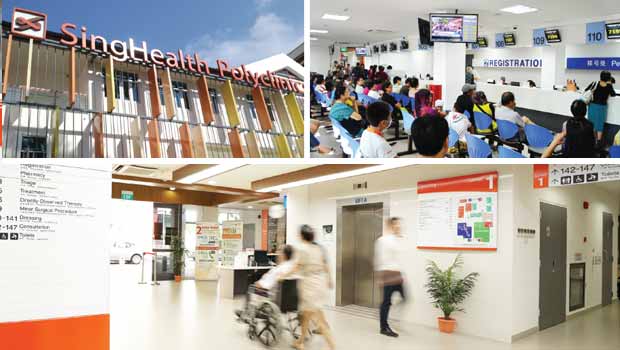
- The growing and ageing population causes increase in attendance and complexity of cases
- SHP started a taskforce that implemented new initiatives from various approaches
- Patient satisfaction hit a four-year high and overall waiting time was improved - all within one year
Just over a year ago, high demand for polyclinic services resulted in a drop in patient and staff satisfaction at SingHealth Polyclinics (SHP), where they see from 800 to 1,400 patients a day at each polyclinic.
SHP has since made great strides in improving patient and staff satisfaction through various initiatives to enhance care delivery services, reduce waiting times and boost staff morale.
"With the growing and ageing population, we are seeing an increase in both patient attendance and complexity of cases. A fundamental and radical change was necessary in how we deliver care to patients and how we operate internally,” said Dr Tay Ee Guan, Deputy CEO and Director of Clinical Services at SHP.
“As workload and complexity increased, we became more concerned about staff morale and retention,” he added.
The transformation journey began with the formation of the SHP Service Transformation Task Force (STTF). The taskforce was led by Dr Tay Ee Guan, co-chaired by Ms Lee Chen Ee, Director of SingHealth’s Office for Service Transformation, and comprised staff members from SingHealth HQ and SHP.
Managing patients through new initiatives
The STTF implemented new initiatives that included building medical manpower through alternative means of recruitment and implementing a new appointment system so patients would spend less time waiting.
They also set up a call centre to make appointment bookings more convenient, and collaborated with healthcare providers in the community such as General Practitioners and Family Medicine Centres to provide alternate visit options for patients.
“The new appointment system helps patients manage their time better, as they don’t have to wait indefinitely. In addition, follow-up patients can skip the registration queue, shaving off more waiting time,” said Lucas Goh, Assistant Director of Operations and Planning at SHP.
Optimising resources
The team decided that SHP had to optimise the use of available resources such as expanding the scope of Nurse Clinician Service (NCS) for chronic disease management for more efficient care delivery. Nurses are now able to review certain blood tests during the patient’s visit at the NCS.
“The nurses are now further empowered to practise at the top of their license, improving their job satisfaction while positively impacting patient experience,” said Dr Gilbert Tan, Assistant Director of clinical services at SHP.
Implementing and communicating these changes had its challenges, especially as patients and staff had to relearn processes. The team came up with various creative communication tools such as pamphlets, videos and cartoon strips to explain the initiatives in a simple and engaging way.
Their efforts paid off. Within one year, patient satisfaction at SingHealth Polyclinics hit a four-year high. All metrics measured in the annual MOH Patient Satisfaction Survey for 2014 outperformed results from the previous three years.
Overall waiting times for registration and consultation (based on 95th percentile) have improved significantly from 160 minutes in June 2014 to 120 minutes in June 2015.
“The task force worked hard to implement the initiatives, with the aim to improve patient care and experience, and also create a conducive working environment for our staff.
“We were pleasantly surprised that improvements were felt just three months into the project, and are happy with the positive impact the changes have made,” said Dr Tay.













 Get it on Google Play
Get it on Google Play